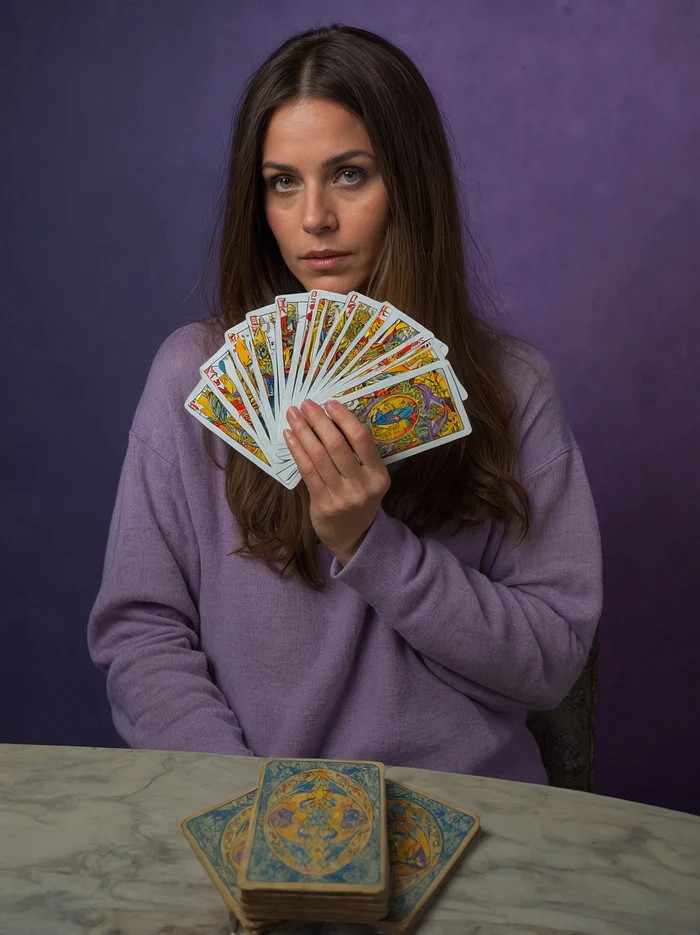Article: Tarot vs Intuitive Clairvoyance: Which Suits You?

Tarot vs Intuitive Clairvoyance: Which Suits You?
When it comes to seeking spiritual guidance or answers to life’s pressing questions, two popular methods often stand out: tarot readings and intuitive clairvoyance. While both offer profound insights, they cater to different needs and preferences. This blog explores the key differences between the two approaches, their unique strengths, and how to decide which one is right for you.
Understanding Tarot Readings
What Is Tarot Reading?
Tarot reading is a centuries-old practice rooted in symbolic imagery and structured interpretation. Here’s what you need to know:
- History and origins: Tarot originated in the 15th century as a card game and later evolved into a tool for divination. Its mystical aspects became prominent in the 18th century, when spiritualists began using tarot to gain insights into the human psyche and spiritual journey.
- Overview of tarot decks: Popular decks like the Rider-Waite and Thoth Tarot feature rich symbolism, with 78 cards divided into the Major and Minor Arcana. Each card within these decks tells a unique story and represents distinct energies, archetypes, and life lessons.
The tarot’s enduring popularity lies in its ability to bridge the conscious and subconscious mind, offering a mirror into one’s life and decisions.
How Tarot Works
Tarot readings rely on:
- Symbolism and imagery: The detailed visuals on each card serve as a reflection of your subconscious mind. Each symbol—from cups to swords, pentacles to wands—carries layers of meaning that resonate with different aspects of life.
- Interpretation through structured spreads: Spreads, such as the Celtic Cross, past-present-future spread, or relationship spread, organize the reading to address specific questions or themes. These spreads help focus the reading, providing clarity and direction.
Tarot readers combine intuitive insights with the cards’ meanings to guide you through your concerns. Experienced readers can adapt their interpretations to your personal context, making the reading deeply relevant and actionable.
When to Choose Tarot
Tarot readings are ideal for:
- Specific questions: If you need clarity on a decision or situation, tarot’s structured framework can provide precise answers.
- Exploring options: Tarot offers insights into potential outcomes, helping you weigh choices and understand possible consequences.
- Self-reflection: By revealing patterns, emotions, and challenges, tarot aids in personal growth and self-awareness.
For those who appreciate a visual, tangible connection to their reading, tarot can be an empowering tool.
Understanding Intuitive Clairvoyance
What Is Intuitive Clairvoyance?
Intuitive clairvoyance taps into a psychic’s innate ability to perceive information beyond the physical senses. Key aspects include:
- Definition: Clairvoyants receive intuitive insights through visions, impressions, or feelings. The term "clairvoyance" means "clear seeing," but it encompasses various forms of extrasensory perception.
- Types of intuitive insights: These may manifest as images (mental snapshots or moving scenes), sensations (a sense of knowing or feeling), or spontaneous knowledge that appears without conscious reasoning.
Clairvoyance often provides a broad, unrestricted perspective that delves into the deeper energetic and emotional layers of a situation.
How Clairvoyants Connect with You
Clairvoyance involves:
- Energy reading: Psychics tune into your energy field, often referred to as your aura, to access information. This connection allows them to perceive subtle shifts and patterns that might not be immediately apparent.
- Spiritual connections: Some clairvoyants work with spirit guides, ancestors, or higher realms to convey messages that resonate with your life path.
- Tools or no-tools approach: While many clairvoyants prefer not to use physical tools, others may incorporate aids like crystals or meditation techniques to enhance their focus and connection.
Clairvoyance is inherently flexible, allowing each session to unfold uniquely based on the client’s energy and needs.
When to Choose Clairvoyance
Clairvoyance is suited for:
- Broad life insights: Seek guidance on overarching themes, such as your spiritual journey or life purpose.
- Emotional clarity: Address deep-seated emotions, unresolved trauma, or relationships that need healing.
- Energetic clarity: Understand how your energetic patterns influence your life and explore ways to align your energy with your goals.
If you’re seeking a fluid, intuitive perspective that goes beyond immediate concerns, clairvoyance is a powerful option.
Key Differences Between Tarot and Clairvoyance
Tools vs. No Tools
- Tarot: Utilizes physical tools like cards and spreads to organize and interpret insights. This structured approach makes it ideal for those who appreciate a methodical framework.
- Clairvoyance: Relies solely on the psychic’s innate abilities, often without external aids. This can feel more organic and spontaneous, offering a direct connection to the intuitive flow.
Structured Guidance vs. Free-Flowing Insights
- Tarot: Follows a structured framework, making it ideal for exploring specific situations with defined questions.
- Clairvoyance: Offers fluid and spontaneous insights, which can provide a broader, more holistic perspective.
Practical vs. Spiritual Approach
- Tarot: Focuses on tangible, actionable guidance that often addresses immediate challenges or decisions.
- Clairvoyance: Delves deeper into spiritual and emotional dimensions, offering insights that encourage personal transformation and soul growth.
How to Choose the Right Approach for You
Assessing Your Questions and Needs
Ask yourself:
- Do you need clarity on specific situations or broad guidance?
- Do you resonate more with structured symbolism or intuitive energy?
If your questions are specific and immediate, tarot might be the better fit. For a broader, more spiritual perspective, clairvoyance could be ideal.
Exploring Your Comfort Zone
- Comfort with visual aids: Tarot’s imagery might appeal to those who find visuals helpful in processing information.
- Trust in unstructured insights: Clairvoyance suits those open to spontaneous and intuitive revelations.
Your level of comfort with each method can help guide your choice.
Trying Both for Comparison
If you’re unsure, consider experiencing both styles:
- Hybrid sessions: Some readers combine tarot and clairvoyance to offer a blend of structured and intuitive guidance.
- Personal resonance: Reflect on which approach feels most meaningful and effective for your needs.
Can Tarot and Clairvoyance Be Combined?
The Synergy of Tools and Intuition
Many psychics use tarot as a starting point and combine it with their intuitive abilities to deepen the reading. This synergy offers:
- Enhanced clarity: Tarot provides structure, while clairvoyance adds depth and nuance.
- Comprehensive insights: Combining both methods creates a well-rounded session that addresses multiple layers of a situation.
Benefits of Hybrid Session
- Greater depth: Address both specific and broad concerns in one session.
- Versatility: Adapt to your evolving needs during the session.
Examples of Combined Readings
- Life path clarity: Use tarot to outline potential paths and clairvoyance to delve into the energetic and emotional implications.
- Relationship guidance: Tarot identifies patterns, while clairvoyance uncovers hidden dynamics and emotional undercurrents.
Tips for a Successful Reading (Tarot or Clairvoyance)
Preparing Yourself Before the Session
- Set intentions: Be clear about what you want to achieve from the reading.
- Clear your mind: Practice meditation or deep breathing to create a receptive state.
- Create a quiet space: Ensure you have a peaceful environment free from distractions.
Communicating with the Reader
- Phrase questions effectively: Open-ended questions encourage deeper insights (e.g., “What can I learn from this situation?”).
- Be honest: Share your concerns openly to facilitate a meaningful session.
Following Up After the Session
- Reflect on insights: Journal your thoughts and any new perspectives gained during the session.
- Plan next steps: Take actionable steps based on the guidance received, such as setting new goals or seeking additional clarity.
Frequently Asked Questions

